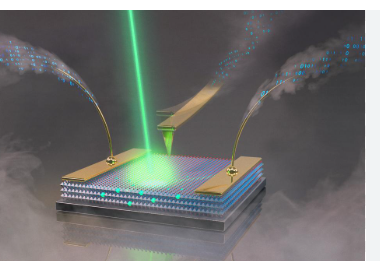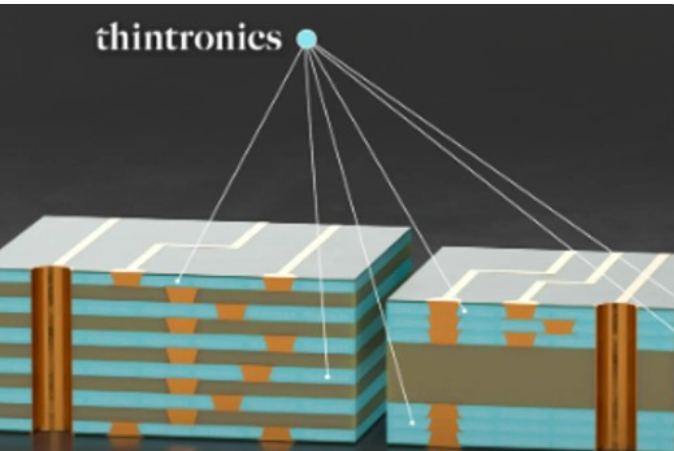Moore’s Law used to define growth in the semiconductor industry. It focused on smaller transistors and higher density. As physical scaling hits its limits and performance gains slow, the definition is changing. Erik Hosler is a consultant who specializes in user-centered innovation for chip development. He sees a new direction emerging in this field. Progress now relies less on tiny parts and more on how technology helps its users.
This change is influencing how chips are designed, integrated, and evaluated. Performance now includes responsiveness, efficiency, and reliability across real-world applications. These qualities are key to understanding innovation in the semiconductor ecosystem.

When Shrinking Stops Being the Point
From the 1970s through to the early 2010s, Moore’s Law was interpreted quite . Every new node meant smaller transistors, better performance, and greater energy efficiency. But at the sub-10nm scale, benefits are harder to come by. Higher density can cause diminishing returns. This happens because of power leakage, heat build-up, and increased costs.
These realities have triggered a re-evaluation of what it means to improve a chip. Today, performance often comes from smarter architecture, clever power management, and heterogeneous integration. It’s as important as shrinking components. These strategies focus on improving user experience instead of meeting benchmarks.
Experience as the New Metric
Today’s top technologies include:
-
Voice assistants
-
Real-time translation
-
Mixed-reality headsets
-
Smart edge devices
They attract us not for GHz or nanometers. Instead, it’s their immediacy, responsiveness, and smooth interactivity that draw us in. Users rarely ask what node their processor was built on. They care whether the technology works effortlessly.
This reorientation toward experience influences how chips are designed. Faster local inference on edge AI chips leads to smoother video processing. It also enables real-time object recognition. Energy-efficient processors extend battery life in wearables without sacrificing responsiveness. These improvements show how users interact with devices. This is the new standard of progress.
User-Centered Design as an Engineering Priority
As user needs drive development, design priorities shift. No longer is it enough to deliver the greatest compute power in isolation. Chip designers should start with the application context. They need to optimize for responsiveness, form factor, power use, and intuitive behavior.
In healthcare wearables, this might mean real-time sensing with secure, on-device data processing. In autonomous vehicles, this means making quick decisions. It includes added safety features and backup systems. These are not abstract engineering goals. They are tangible user expectations, and meeting them requires intentional, context-aware engineering.
The blend of performance and usability puts human experience at the heart of tech progress. That shift reframes Moore’s Law’s legacy from the silicon race to human relevance.
Integration Over Isolation
The move to experience-centric design goes hand in hand with another trend. This trend is the blending of different technologies into one system. Today’s engineers don’t rely only on CMOS logic. They combine different tools to tackle challenges. This includes specialized accelerators, memory systems, and wireless modules. They also use new components like photonics and MEMS.
Photonics speeds up data transfer between chips. MEMS brings sensing and interaction with the physical world. These technologies do not directly reduce the feature size, but they elevate function. They aim for the same goal Moore’s Law promised: doing more with less. Now, it’s about capability, not raw transistor count.
The Changing Role of the Chip
In this new model, the chip is no longer an isolated computation engine. It joins a bigger, smarter system. It works together with software layers, cloud connections, and analog inputs. This system-oriented view changes how we approach everything from design to measurement.
A chip with a neural processing unit for speech recognition works better than one with a higher clock speed. A processor made for quick responses in self-driving cars offers safety benefits. These advantages can’t be measured by traditional benchmarks. In short, the future isn’t about Moore’s Law as we knew it. It’s about capturing its essence in new ways.
Performance, Redefined
Redefining performance involves expanding the criteria for progress. Power efficiency, thermal stability, and consistent data flow are now key attributes. Responsive behavior is also important. These qualities often result from system-level design choices rather than advances in lithography.
Chiplets offer a clear example. Designers can use several smaller modules instead of one big die. They combine these modules into a single package. This method helps combine various process nodes. It combines analog and digital functions. This makes customizing systems for specific uses easier. The result is not smaller features but more adaptable, application-ready platforms.
An Ecosystem Approach to Scaling
Meeting modern expectations needs teamwork from different fields: electrical, optical, mechanical, and computational. Innovation isn’t about transistors anymore. It’s in the connections between components, how data flows, and how systems react to their environment.
The industry is adopting photonics and MEMS. It’s not for technical novelty. These technologies help improve the system experience. Light-based communication reduces latency, and MEMS enable contextual awareness. Together, they bridge the gap between digital capability and human expectations.
Erik Hosler says, “Continuing Moore’s Law may need photonics, MEMS, and other new tech.” The industry now values functionality, user value, and teamwork more than size.
Reimagining Progress Through Convergence
Moore’s Law is not dead. But it is improving. Where we once counted transistors, we now count experiences. We used to focus on masks and etches. Now, we create ecosystems with technologies that work well together.
In this new paradigm, scaling does not disappear. It becomes about scaling intelligence, not computation. About scaling usability, not density. About scaling value, not volume. What lies ahead is not a race for smaller nodes but a pursuit of smarter integration.
As technology advances, the line between hardware, software, and applications blurs. This makes them more powerful together. Experience, not the equation, becomes a measure of meaningful innovation. The industry is changing its benchmarks. The future of progress won’t just be about what chips can do. It will also depend on how people feel when using them.
